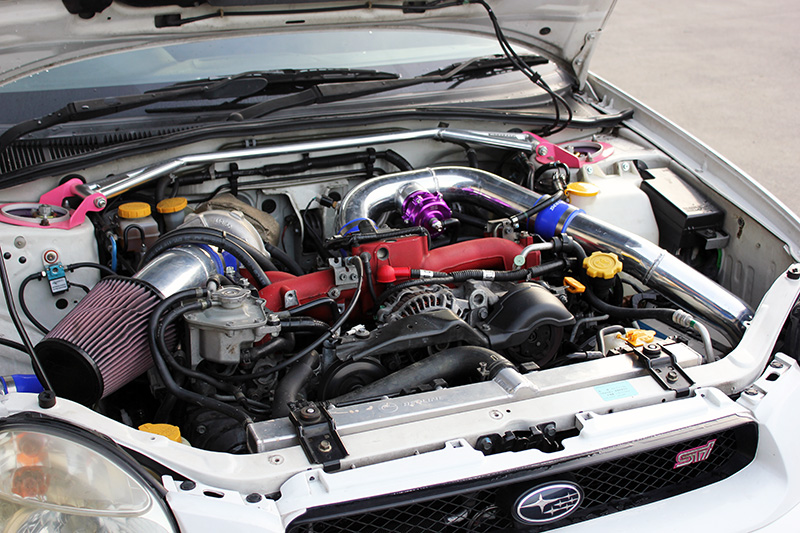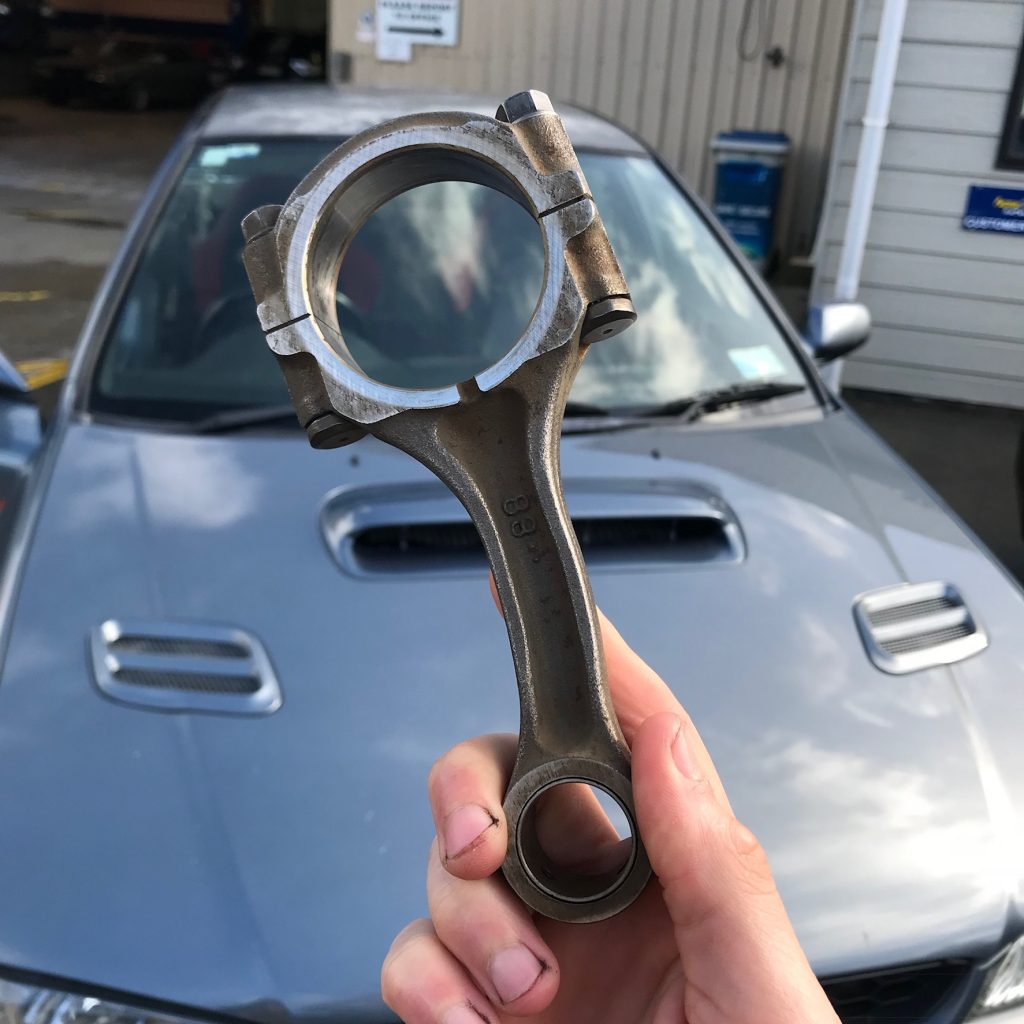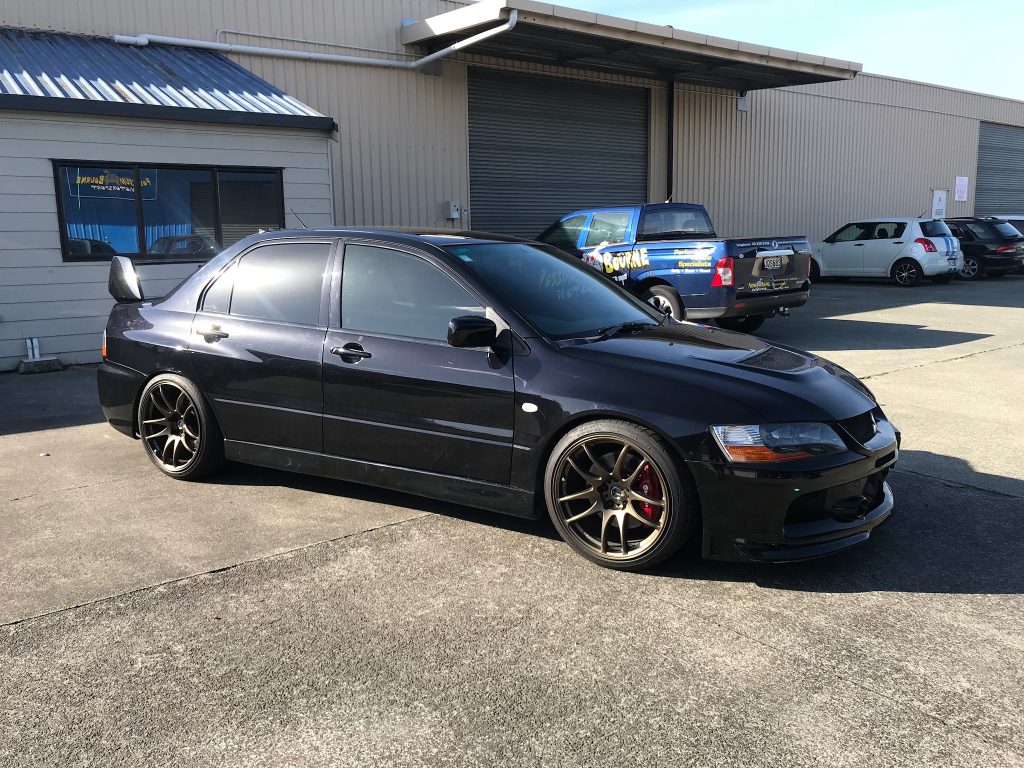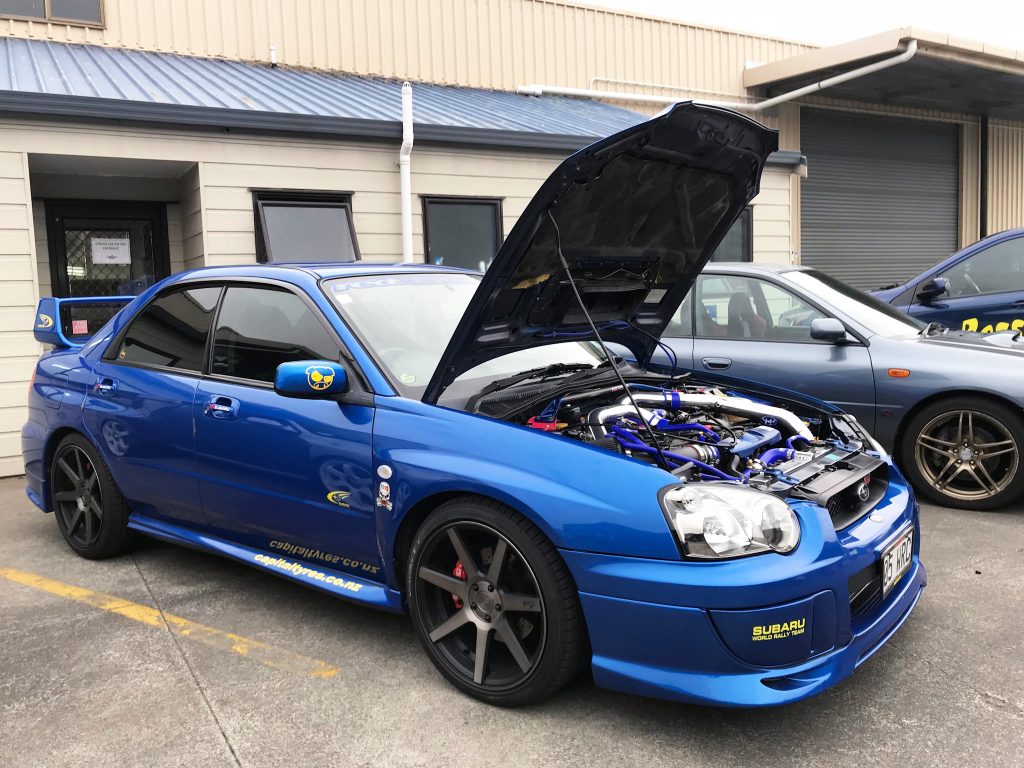It's one of the most common questions we get asked: How far can I push my stock block?
And it's actually a pretty difficult one to answer. We can look to experience. We can consider what results we've seen others achieve. BUT, we want to be able to give our customers and followers a confident conclusion, and it's not a one-size fits all answer.

PBMS modified and tuned V7 STI producing 280kw on a mild 20psi using a GTX3076R Turbo on the stock block[/caption]
Why's it difficult to answer how much power it can handle?
That's much easier to answer - because there are so many variables. Whilst there are many factors and physics at work in the background, we'll keep this (reasonably) simple.
Explain?
Well first, 'power' can be variable. The point in the rev-range where power is delivered can have a significant impact on cylinder pressure and load on components such as the con-rods. We can't just say that X engine is good for 300kw, just because someone else made 300kw, because there are many other factors that need to be taken into account. All of which are dependant on the exact model of engine.
Power
Horsepower or Kilowatts is the standard of the peak power an engine produces. An increase in power increases cylinder pressure and the pressure applied to internal components. The power an engine can handle will depend on the exact engine, as well as where in the RPM range the power is produced - see torque.
Torque
Torque is essentially power produced lower in the RPM range. A higher torque level, means more power at a lower engine speed. This results in a higher pressure applied to the internal components over a sustained period, which effectively creates additional engine load. Excessive torque has been known to bend or break connecting rods.

Engine speed
The more you rev and engine, the faster internal components have to move. Revving high, or even accelerating at a faster rate than designed can cause components to let go, slip or break.
Tuning
If using a stock engine, the tuner needs to take this into consideration when calibrating an ECU. Typically, the pistons aren't as strong or resistant to high pressures as an aftermarket forged piston. This requires a greater margin of safety, which typically mean less ignition timing and slightly richer air fuel ratios. We have seen many un-tuned or poorly tuned stock block engines that have failed by way of a broken or melted pistons as a direct result. [caption id="attachment_1793" align="alignnone" width="1024"]

PBMS modified and tuned Evo 9 producing a peak of 330kw using a stock block (cams and head studs upgraded)[/caption]
Engine condition
Engine condition is every bit as important as the strength of an engine. If the engine isn't in good condition this can limit power, increase the likely hood of a catastrophic failure or prevent a quality result. Whilst this article specifically tackles the engine itself, it is equally true for the engine's supporting and external components. We have seen engines fail and sustain severe damage, not because the engine is at the limit of strength, more so due to the engine being worn. A commonly found issue with Subaru's and some other makes is for the big end bearings to wear of time. The addition of more power will exacerbate this wear and can cause engine failure. Whilst engine disassembly, inspection and a rebuild is the ideal path to ensure long-term reliability, it is not always affordable, nor appropriate. We recommend doing the following assessments to give the best indication of the engine's condition, without full disassembly:
- Compression test
- Leak down test
- Oil filter contaminants analysis
- Cooling system pressure test
- Cooling system combustion gas test (TeeKay Test)
We recommend the following to give the engine the best chance of producing high power levels with reliability:
- Intake system pressure tested and not leaking
- High quality performance engine oil and filter (PBMS use and recommend Motul Oils - contact us for the recommended oil for your engine, application and power level)
- Up-to-date servicing and maintenance
- Big end bearings checked (where possible)
- Oil pressure checked and in expected range
- Good condition and high quality engine cooling system components
- Ignition and EFI system in good condition, with a quality computer setup with engine protection features

Our recommendations:
Do research
Look around to see what others have been achieving from their stock blocks. Keep in mind that power figures will vary with dynos, as well as with fuel quality. Take everything on the internet and forums with a grain of salt.
Talk to the experts
Before embarking on a stock-block build, it pays to talk to your tuner to confirm you're on the right track. Contact us if you'd like to discuss your build with Possum Bourne Motorsport.
Give the engine a fighting chance
Follow our recommendations surrounding engine condition and any advice you may have found in your research.
Plan
Have a plan on how far you want to take the stock block, and how far you'd want to go with a built engine. This can mean spending a little additional time or money in the short term, that will allow for more power if the engine is eventually replaced with a performance built item.
If you want huge power, expect to find the limit
There is no doubt about it; if you're asking more of the engine than it's designed to handle, you're pushing the limits. We've have many happy customers that've had long term reliability, but there is an element of risk involved.

PBMS modified and tuned V9 WRX using a stock V7 STI block. Producing 300kw+ at the wheels[/caption]
